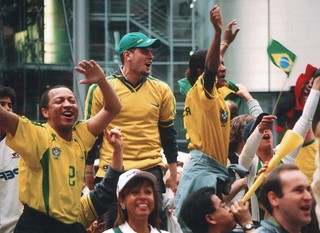What does it look like when workplace conditions bring out the best in people?
The addition of a new paid staff member at Creating the Future sparked this discussion topic at the September board meeting – a discussion that is truly about what it means to build community not just “out there” in the community, but within the four walls of organizations of all kinds.
The meeting materials began with the following preface:
“As is so common when boards consider subjects related to personnel, it can be easy to start with questions such as, “what’s our budget, and what can we offer our employees, given our finances?” With that in mind, we intend that our board conversation will encompass more than that. If we are intentional about the kind of workplace we want to create, then what does it look like to create workplace conditions that bring out the best in people?”
While the co-founders and the board members knew that a desired outcome of the conversation could be the development of human resource policies addressing benefits such as paid time off and a health and wellness allowance, their purpose was to look deeper into the “why” of workplace conditions and to consider the highest potential for staff (both employee and volunteer). They wanted to define the conditions from which the benefits could then flow.
The following are some of the highlights of their dialogue.
- A philosophical focus on relationships rather than the usual “wage for task” transaction
- Aligning individual and organization potential with the potential of the community and creating a vibrant life for everyone involved.
- “Vibrant” was defined as encompassing an unleashing of each person’s potential, engagement that leads to positive change, knowing each team member as whole person and supporting their needs, and treating everyone as a member of the family with “collective responsibility” for each other.
- Everyone on the team will be accountable to each other and to the cause.
- The structure of the organization will be such that it supports the desired workplace conditions by incorporating a sense of equity and treating everyone as a leader. The concept of a “flat” organization was discussed.
- Each member of the team will feel seen, understood, and supported.
- There will be a focus on being with each other – demonstrating an interest in each person, ensuring time to listen carefully, and responding with meaning – rather than focusing on what we can “get” from each other.
 Moving from the discussion of what success would look, the board then considered what those conditions would look like in practice. What would practical matters such as employee benefits and policies look like if they were bringing out the best in both the people and the organization?
Moving from the discussion of what success would look, the board then considered what those conditions would look like in practice. What would practical matters such as employee benefits and policies look like if they were bringing out the best in both the people and the organization?
That led to an interesting question from one of the participants via Twitter, Liam Barrington-Bush:
“What is a policy offering, that ongoing dialogue amongst those affected can’t? And what gets lost when you try to turn the ongoing dialogue process into a static text document? Do the benefits of codifying the conversation, outweight the costs?”
The group agreed that policies hold the space and provide a framework where dialogue can take place. By the close of the meeting, the board agreed to continue this conversation, to ensure that all of Creating the Future’s policies and processes are providing that space for conversation – bringing out the best in the people, the organization, and the mission.
Case study questions to consider:
1) Workplace policies generally focus on the “what” and “how” with a goal of mutual protection of the employee and organization. How can policies be re-framed to answer the “why” and to focus, instead, on mutual growth of the individual and the organization?
2) What do nurturing and supportive workplace conditions make possible for staff? for the organization? for the community?
To watch the whole discussion at our September meeting, and to see the Twitter and blog comment participation, click here.
Photos courtesy of Wikimedia Commons.

